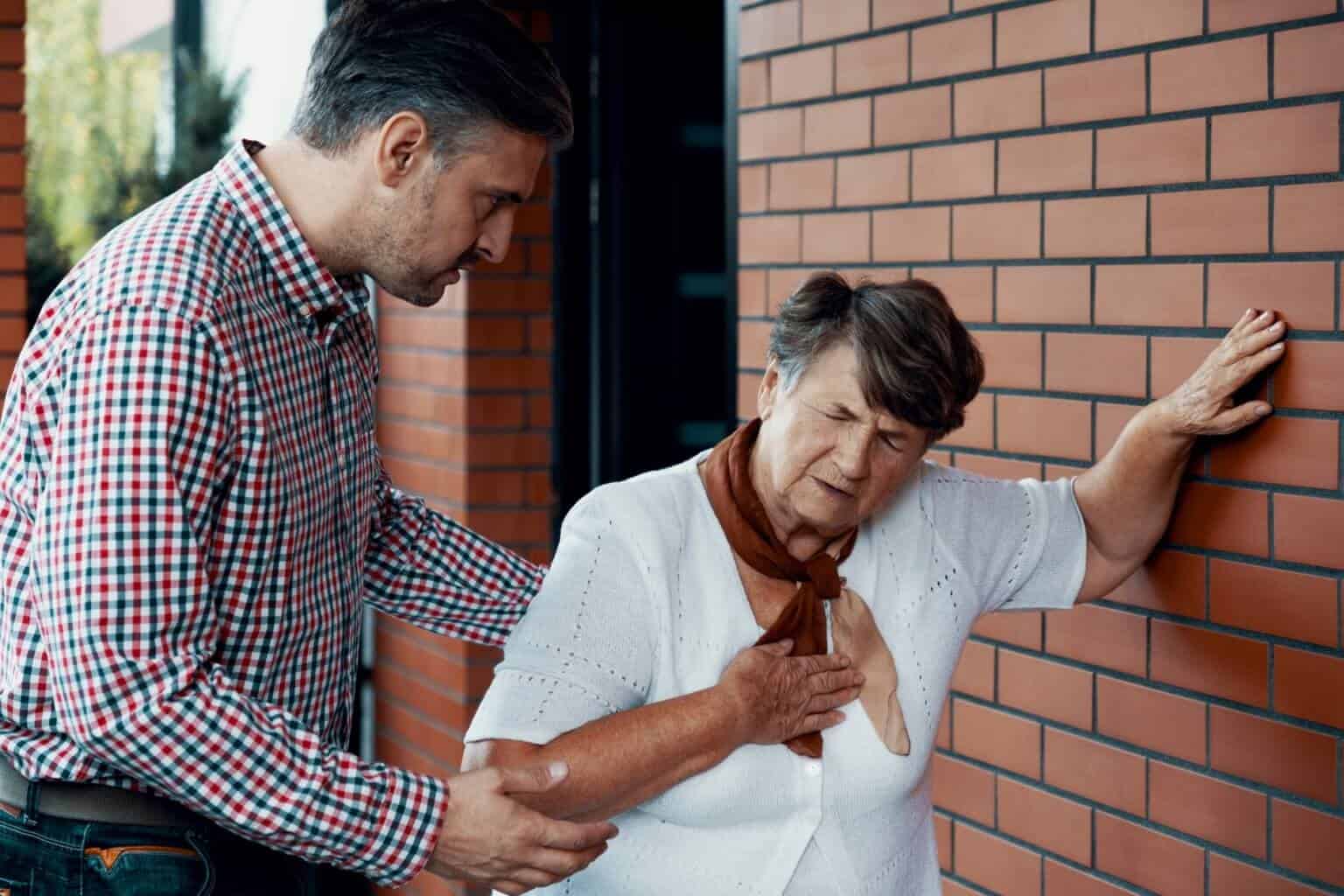Shortness of Breath: Understanding the Struggle to Breathe (Dyspnea)
Shortness of breath, medically known as dyspnea, is a distressing feeling of not being able to get enough air into your lungs. It can range from a mild inconvenience after exertion to a debilitating symptom that interferes with daily activities. While shortness of breath can be alarming, it’s important to remember it’s a symptom, not a disease itself. It can point to a wide range of underlying conditions, some mild and others more serious.
This article delves into the complexities of shortness of breath, exploring its causes, treatment options, and when you should seek medical attention.
Causes of Shortness of Breath
Shortness of breath can arise from problems affecting your lungs, heart, respiratory system, or even anxiety. Here’s a breakdown of some common causes:
Lung Problems
- Asthma: This chronic inflammatory condition causes narrowing of the airways, restricting airflow and leading to shortness of breath, wheezing, and chest tightness.
- Chronic Obstructive Pulmonary Disease (COPD): COPD is a group of lung diseases, including emphysema and chronic bronchitis, that damage the lungs, making it difficult to breathe.
- Pneumonia: This lung infection causes inflammation of the air sacs in the lungs, filling them with fluid and making breathing labored.
- Pleurisy: Inflammation of the pleura, the lining surrounding the lungs, can cause sharp chest pain and shortness of breath with each breath.
- Pulmonary embolism: A blood clot lodged in an artery in the lungs can block blood flow and cause sudden, severe shortness of breath.
- Pneumothorax: A collapsed lung occurs when air leaks from the lung into the space between the lung and chest wall, causing shortness of breath and chest pain.
Heart Problems
- Heart failure: When the heart weakens and struggles to pump blood efficiently, fluid can build up in the lungs, leading to shortness of breath, especially when lying down.
- Heart attack: A blocked artery can damage the heart muscle and lead to a sudden onset of shortness of breath, along with chest pain, sweating, and nausea.
- Arrhythmia: Irregular heart rhythm can affect blood flow and oxygen delivery to the body, causing shortness of breath, fatigue, and dizziness.
Other Causes
- Anemia: A lack of red blood cells can reduce the amount of oxygen carried to tissues, leading to shortness of breath, fatigue, and pale skin.
- Anxiety disorders: Panic attacks and anxiety can trigger rapid, shallow breathing, causing a feeling of shortness of breath.
- Obesity: Excess weight can put strain on the heart and lungs, leading to shortness of breath, especially during exertion.
- Deconditioning: Poor physical fitness can make even simple activities feel strenuous and lead to shortness of breath.
- High altitude: At high altitudes, the air is thinner, containing less oxygen, which can cause shortness of breath in healthy individuals.
Warning Signs to Seek Immediate Medical Attention
While shortness of breath can be caused by benign conditions, it’s crucial to seek immediate medical attention if you experience any of the following:
- Sudden onset of severe shortness of breath
- Shortness of breath accompanied by chest pain, wheezing, or coughing up blood
- Difficulty breathing when lying down
- Blue lips or skin (cyanosis)
- Rapid, shallow breathing
- Feeling lightheaded or dizzy
- Fever or chills
- Swelling in your ankles or feet
- Confusion
Treatments for Shortness of Breath
The treatment for shortness of breath depends on the underlying cause. Here’s an overview of treatment options for common causes:
Lung Problems
- Asthma: Inhaled medications like bronchodilators and corticosteroids can open airways and reduce inflammation.
- COPD: Bronchodilators, oxygen therapy, and pulmonary rehabilitation can help manage symptoms and improve quality of life.
- Pneumonia: Antibiotics are prescribed to fight the infection, and oxygen therapy may be needed if breathing is severely compromised.
- Pleurisy: Pain medication and anti-inflammatory drugs can help manage pain and inflammation.
- Pulmonary embolism: Blood thinners are given to dissolve the clot and prevent further complications. Surgery or catheter procedures might be necessary in severe cases.
- Pneumothorax: A chest tube may be inserted to remove air from the space around the lung, allowing it to re-inflate.
Heart Problems
- Heart failure: Medications like diuretics, ACE inhibitors, and beta-blockers can help regulate blood pressure and improve heart function.
- Heart attack: Emergency treatment focuses on restoring blood flow to the heart muscle and minimizing damage. This may involve medications, angioplasty, or bypass surgery.
- Arrhythmia: Medications or procedures like ablation may be used to regulate the heart rhythm.
Other Treatments
- Anemia: Treatment depends on the underlying cause but may involve iron supplements, vitamin B12 injections, or medications to stimulate red blood cell production.
- Anxiety disorders: Therapy techniques and medications like antidepressants can help manage anxiety and reduce symptoms of shortness of breath.
- Obesity: Weight loss through diet and exercise can significantly improve lung function and alleviate shortness of breath.
- Deconditioning: A gradual exercise program can improve lung and heart function, making breathing easier during activities.
Self-Care Strategies for Managing Shortness of Breath
In addition to medical treatment, some self-care strategies can help manage shortness of breath and improve your quality of life:
- Pursed-lip breathing: This technique involves inhaling through your nose and exhaling slowly through pursed lips, helping to slow your breathing rate and improve oxygen intake.
- Relaxation techniques: Techniques like meditation or deep breathing exercises can help manage anxiety and reduce shortness of breath associated with anxiety.
- Positioning: Sitting upright or leaning forward can help open your airways and make breathing easier.
- Quitting smoking: Smoking damages lungs and worsens shortness of breath. Quitting smoking is crucial for improving lung function.
- Maintaining a healthy weight: Excess weight puts a strain on your lungs and heart. Losing weight, if needed, can significantly improve breathing.
- Regular exercise: Regular physical activity, even gentle walking, can strengthen your heart and lungs and improve your overall fitness level. However, consult your doctor before starting any new exercise program.
Conclusion
Shortness of breath can be a frightening experience but doesn’t always indicate a serious condition. By understanding the various causes and treatment options, you can take control of your health and manage your symptoms effectively. If you experience persistent shortness of breath, especially if accompanied by other concerning symptoms, don’t hesitate to seek medical attention. Early diagnosis and treatment can make a significant difference in your overall health and well-being.


